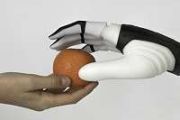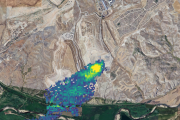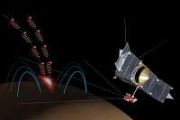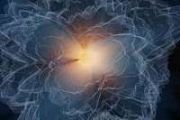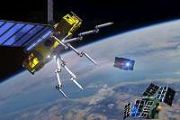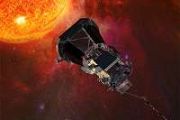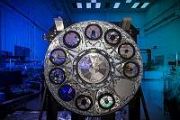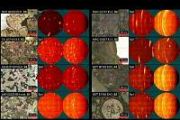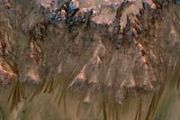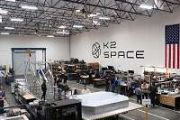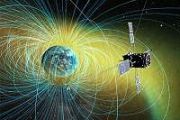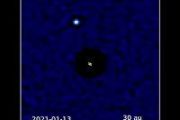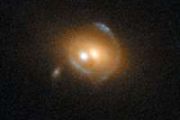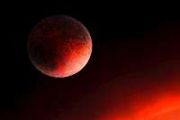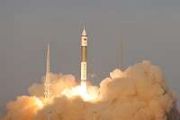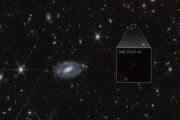
Copernical Team
Low gravity in space travel found to weaken and disrupt normal rhythm in heart muscle cells

Johns Hopkins Medicine scientists who arranged for 48 human bioengineered heart tissue samples to spend 30 days at the International Space Station report evidence that the low gravity conditions in space weakened the tissues and disrupted their normal rhythmic beats when compared to Earth-bound samples from the same source.
The scientists said the heart tissues "really don't fare well in space," and over time, the tissues aboard the space station beat about half as strongly as tissues from the same source kept on Earth.
The findings, they say, expand scientists' knowledge of low gravity's potential effects on astronauts' survival and health during long space missions, and they may serve as models for studying heart muscle aging and therapeutics on Earth.
A report of the scientists' analysis of the tissues is published in the Proceedings of the National Academy of Sciences.
Previous studies showed that some astronauts return to Earth from outer space with age-related conditions, including reduced heart muscle function and arrythmias (irregular heartbeats), and that some—but not all—effects dissipate over time after their return.
Florida company's space balloon takes big step toward 1st human flight

The weekend trip was a success for Space Perspective, the company that already has more than 1,800 people waiting for their chance to take balloon rides in a posh capsule up to the edge of space.
The Spaceship Neptune-Excelsior performed its first uncrewed test flight, soaring to an altitude of 100,000 feet, marking a big step toward the Brevard County space tourism company's march toward its first trip with humans on board next year.
"I could have been in it," Space Perspective cofounder Jane Poynter said Thursday while climbing aboard the company vessel MS Voyager that hauled the capsule back into port. "It worked that well. Everything went so well."
The MS in the ship name stands for "marine spaceport." It set out last week from Port Canaveral, traveling down the coast and into the Gulf of Mexico for the eventual test flight off the coast of St. Petersburg on Sunday.
Many of the company's 130 employees and their families were on hand to welcome the ship back at port as it docked alongside the likes of SpaceX's recovery vessels at North Cargo Berth 8 while a lone Carnival cruise ship was docked across the turning basin at the port.
Hera planetary defence mission: solving asteroid mysteries
 Video:
00:03:12
Video:
00:03:12
There’s a mystery out there in deep space – and solving it will make Earth safer. That’s why the European Space Agency’s Hera mission is taking shape – to go where one particular spacecraft has gone before.
On 26 September 2022, moving at 6.1 km/s, NASA’s DART spacecraft crashed into the Dimorphos asteroid. Part of our Solar System changed. The impact shrunk the orbit of the Great Pyramid-sized Dimorphos around its parent asteroid, the mountain-sized Didymos.
This grand experiment was performed to prove we could defend Earth against an incoming asteroid, by striking it with a spacecraft to deflect
Sentinel-1B journeys back to Earth

The Sentinel-1B satellite, the second satellite of the Copernicus Sentinel-1 mission, completed its disposal process – which included lowering its orbit and passivating its systems to ensure re-entry into Earth’s atmosphere within 25 years.
This careful operation highlights the European Union’s and ESA’s commitment to space safety and sustainability and provides valuable experience for the disposal of current and future spacecraft.
Skycorp's ARMAS sensor to gather radiation data from Lunar South Pole
 SpaceBilt Inc. has announced that its ARMAS (Automated Radiation Measurement for Aerospace Safety) sensor will be included in Lonestar Data Holding's Freedom Payload during Intuitive Machines' upcoming mission to the Lunar South Pole. This mission represents a significant step toward gathering essential radiation data to ensure the safety of future missions in Cislunar space and on the lunar sur
SpaceBilt Inc. has announced that its ARMAS (Automated Radiation Measurement for Aerospace Safety) sensor will be included in Lonestar Data Holding's Freedom Payload during Intuitive Machines' upcoming mission to the Lunar South Pole. This mission represents a significant step toward gathering essential radiation data to ensure the safety of future missions in Cislunar space and on the lunar sur Rob Gutro: Clear Science in the Forecast
 Rob Gutro has never been one to stay idle. From his start working at a paper factory as a teenager, Rob navigated his way to NASA's Goddard Space Flight Center where he serves as the deputy news chief in the Office of Communications until he retires in October 2024.
In this role, Rob manages all the media products, like news stories and videos, that come out of Goddard. He also edits conte
Rob Gutro has never been one to stay idle. From his start working at a paper factory as a teenager, Rob navigated his way to NASA's Goddard Space Flight Center where he serves as the deputy news chief in the Office of Communications until he retires in October 2024.
In this role, Rob manages all the media products, like news stories and videos, that come out of Goddard. He also edits conte A wobble from Mars could be sign of dark matter, MIT study finds
 In a new study, MIT physicists propose that if most of the dark matter in the universe is made up of microscopic primordial black holes - an idea first proposed in the 1970s - then these gravitational dwarfs should zoom through our solar system at least once per decade. A flyby like this, the researchers predict, would introduce a wobble into Mars' orbit, to a degree that today's technology coul
In a new study, MIT physicists propose that if most of the dark matter in the universe is made up of microscopic primordial black holes - an idea first proposed in the 1970s - then these gravitational dwarfs should zoom through our solar system at least once per decade. A flyby like this, the researchers predict, would introduce a wobble into Mars' orbit, to a degree that today's technology coul China launches two more satellites for Beidou navigation system
 China successfully launched two new satellites on Thursday morning as part of its Beidou Navigation Satellite System, according to the China Satellite Navigation Office.
"The satellites were carried by a Long March 3B rocket that lifted off at 9:14 am from the Xichang Satellite Launch Center in Southwest China's Sichuan province and were deployed into a medium-Earth orbit." This marks the
China successfully launched two new satellites on Thursday morning as part of its Beidou Navigation Satellite System, according to the China Satellite Navigation Office.
"The satellites were carried by a Long March 3B rocket that lifted off at 9:14 am from the Xichang Satellite Launch Center in Southwest China's Sichuan province and were deployed into a medium-Earth orbit." This marks the Military and industry experts discuss critical role of space in modern warfare
 Top leaders from the U.S. Space Force and U.S. Navy, along with industry experts, gathered to discuss the increasing importance of space operations in modern military strategy at the Air and Space Force Association's Air, Space and Cyber Conference in National Harbor, Maryland, on Sept. 16. The panel covered the complexities of integrating space into broader military frameworks and explored futu
Top leaders from the U.S. Space Force and U.S. Navy, along with industry experts, gathered to discuss the increasing importance of space operations in modern military strategy at the Air and Space Force Association's Air, Space and Cyber Conference in National Harbor, Maryland, on Sept. 16. The panel covered the complexities of integrating space into broader military frameworks and explored futu Explaining dramatic planetwide changes after world's last 'Snowball Earth' event
 Some of the most dramatic climatic events in our planet's history are "Snowball Earth" events that happened hundreds of millions of years ago, when almost the entire planet was encased in ice up to 0.6 miles (1 kilometer) thick.
These "Snowball Earth" events have happened only a handful of times and do not occur on regular cycles. Each lasts for millions of years or tens of millions of yea
Some of the most dramatic climatic events in our planet's history are "Snowball Earth" events that happened hundreds of millions of years ago, when almost the entire planet was encased in ice up to 0.6 miles (1 kilometer) thick.
These "Snowball Earth" events have happened only a handful of times and do not occur on regular cycles. Each lasts for millions of years or tens of millions of yea 








